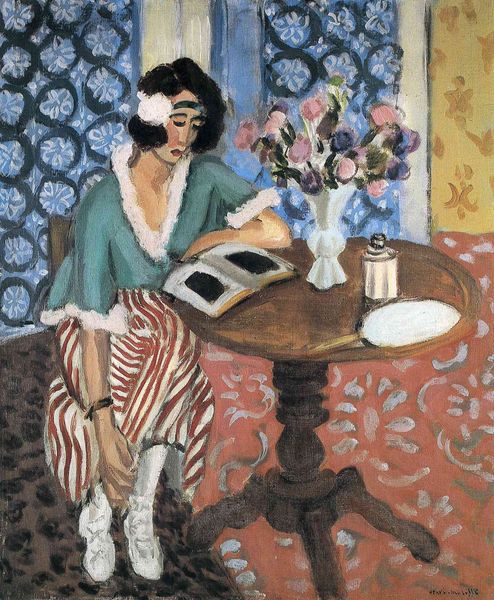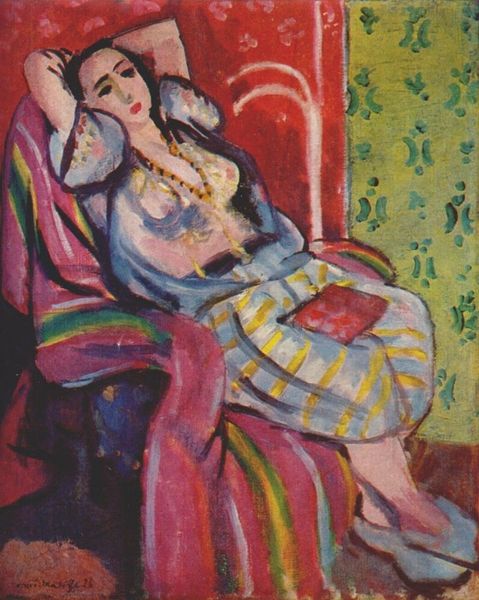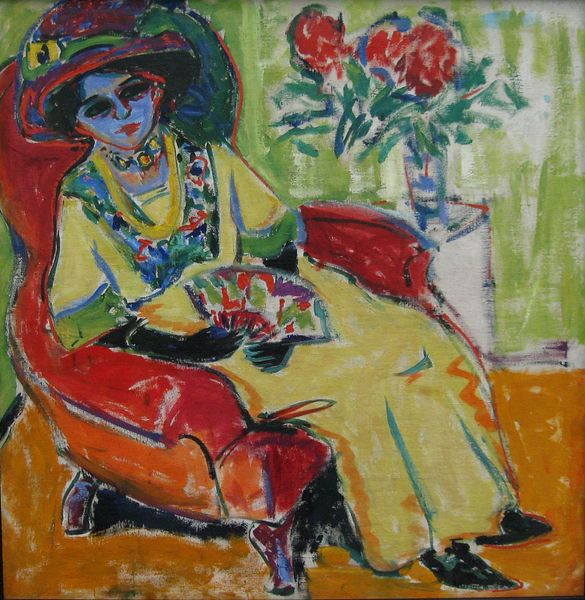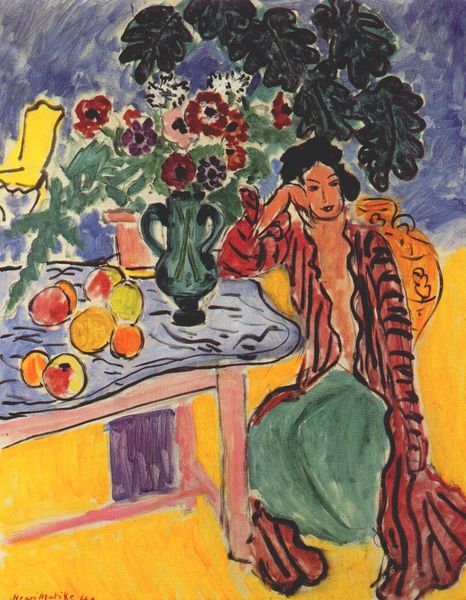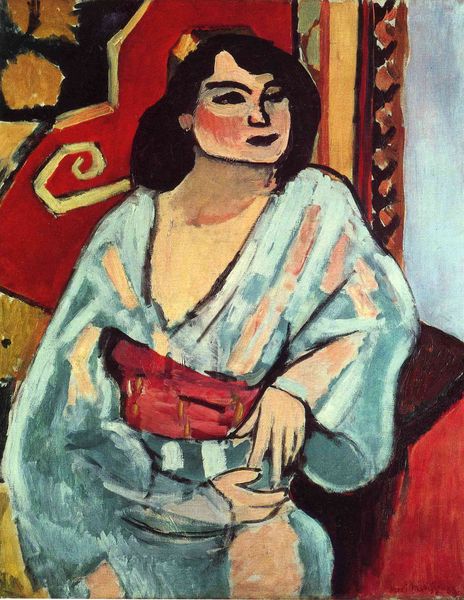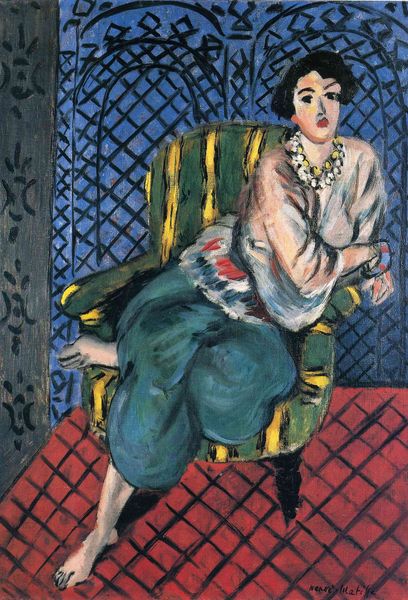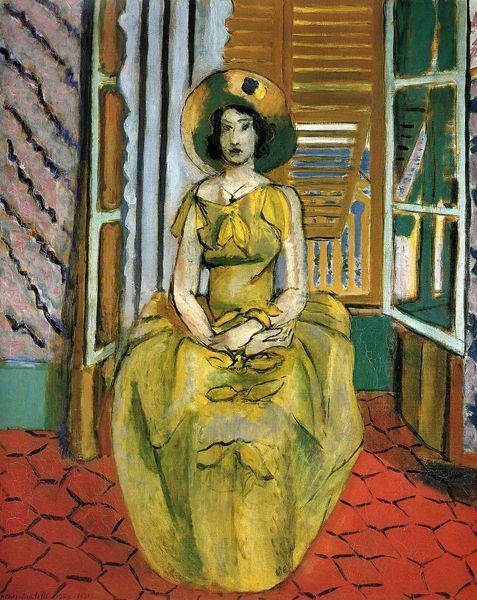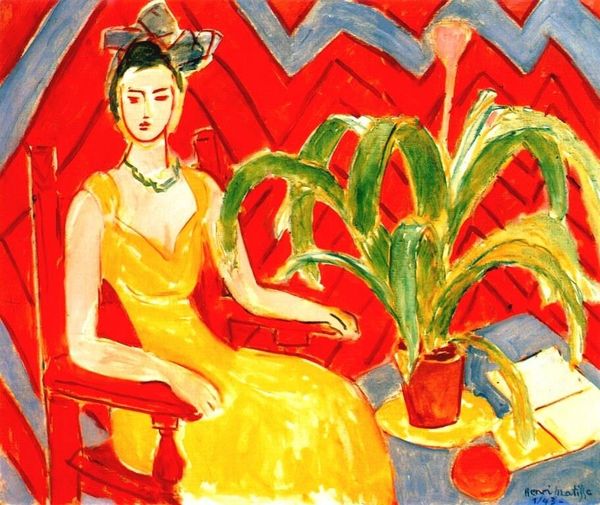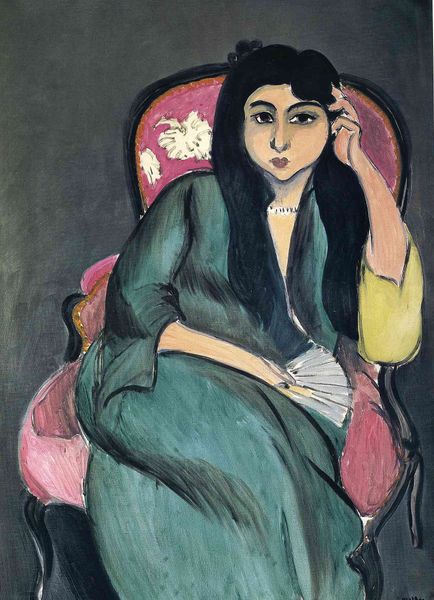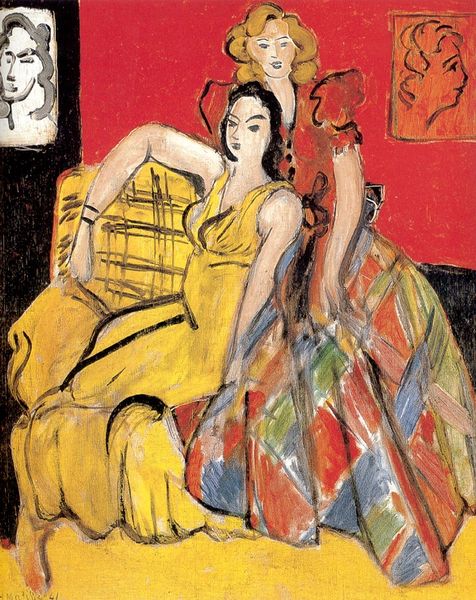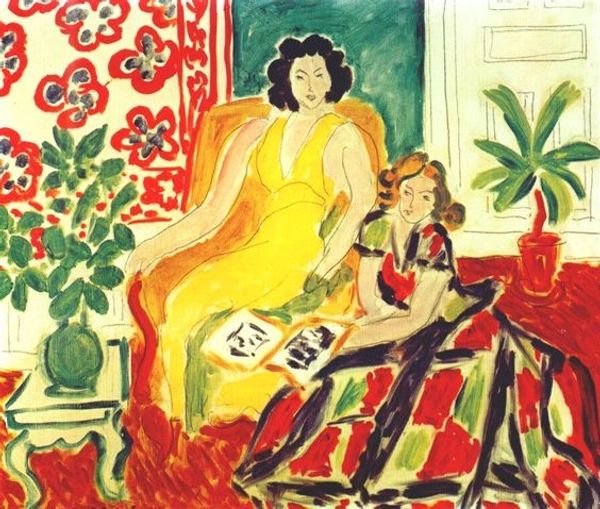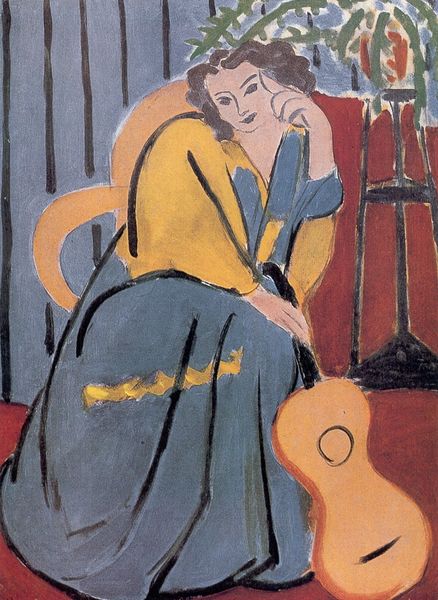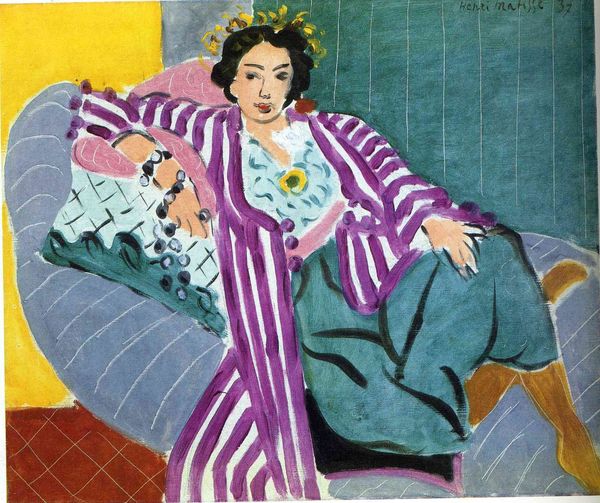
Copyright: Henri Matisse,Fair Use
Editor: Today we’re looking at Henri Matisse’s "Red Jacket," an oil painting created in 1937. I’m really drawn to the bold use of colour, it feels quite energetic and yet there's also a sense of quiet contemplation in the woman's pose. What stands out to you in this piece? Curator: It is interesting that you feel it to be energetic and contemplative at the same time. Looking at the formal elements, I am particularly struck by the interplay between the flattened planes of colour and the decorative patterning throughout the composition. Notice how the red jacket dominates the left side of the canvas, acting almost as a visual anchor? The sinuous lines within the red of her garment echo and reverberate against the curves of her body, and the dark swirls of her hair. Editor: I do see what you mean about how the jacket pulls your eye. I hadn’t thought of it as an anchor, but it’s so striking against the background. Is it meant to represent something about her inner state, or her social role, perhaps? Curator: I don’t believe we are asked to interpret an ‘inner state’ directly. Consider how the colours themselves relate – the balance between warm and cool tones, the subtle gradations within seemingly flat areas of colour. Do you think the patterning adds or detracts from the overall unity of the work? Editor: That’s a really interesting question. I think initially, the busy patterns almost feel a little overwhelming, but the more I look, the more I appreciate how they create a kind of visual rhythm that ties everything together. It keeps the eye moving. Curator: Exactly! The painting eschews traditional representational depth, prioritizing the surface and the relationships between the compositional elements. Its strength comes from its ability to work with pure formalism. Editor: I definitely see the relationships you pointed out, and how focusing on that actually enriches my appreciation, rather than thinking I have to extract something about the 'real world'. Curator: Indeed. By examining its aesthetic anatomy, we find it stands independent of what is or is not around it, instead finding meaning from within.
Comments
No comments
Be the first to comment and join the conversation on the ultimate creative platform.
